Hawaii visitors may not always be getting the best travel advice online. Some of what we read is AI-generated, and seemingly knowledgeable articles may entirely miss most accuracy, presenting an incomplete or utterly misleading picture of what visitors should expect and how to prepare. How do you separate fact from fiction, or, in the case of AI, its hallucination of what is real or unreal?
While researching this article, we found a recommendation for visitors to take a casual stroll on Kauai’s Kalalau Trail in the Napali Coast State Wilderness Park. This AI-written article we will not link to described the notoriously dangerous hike as a “leisurely walk,” leading unprepared tourists into absolute peril. Unfortunately, this type of erroneous content about Hawaii is far from isolated and is becoming more commonplace.
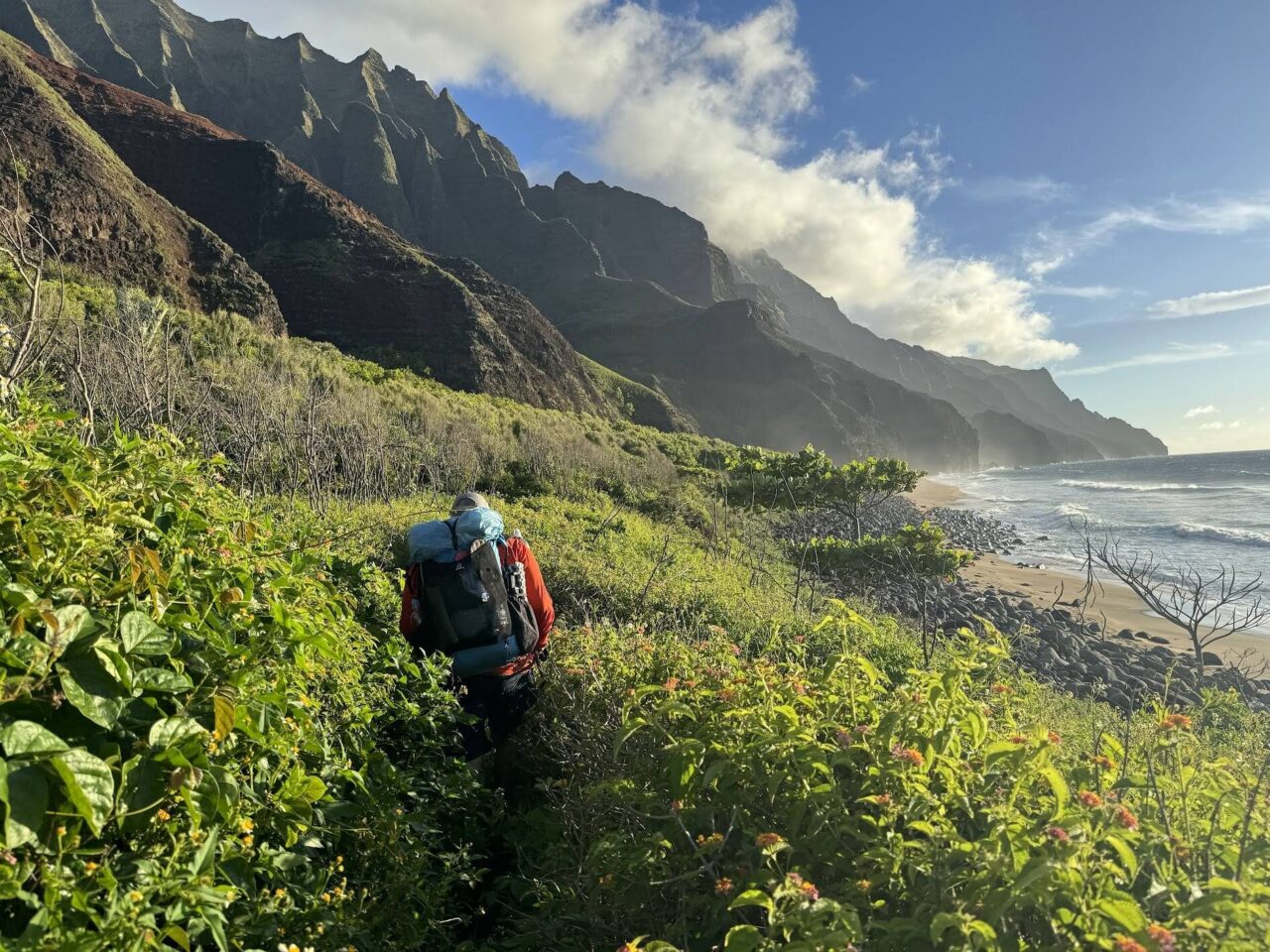

Kalalau Trail sees up to fifty emergency rescues annually.
Among the most famous hikes in Hawaii, Kauai’s Kalalau Trail stands out for its breathtaking views and harrowing challenges which we have cautiously enjoyed. While often described online as a “must-see” or even “easy to moderate,” the reality is far different. This trail requires physical preparedness and an understanding of its risks, including slippery paths, steep drop-offs, and rapidly changing weather. Even experienced hikers can find themselves in precarious situations here. The dangers itself, combined with misleading descriptions, like calling it a “leisurely walk,” have led to countless unnecessary rescues and near-tragedies.
The danger of AI-driven advice for Hawaii tourists.
The consequences for rescue teams are significant: avoidable rescues, strained resources, environmental damage, and frustration with ill-informed visitors. Last month alone, two groups of hikers had to be rescued on this very trail after being caught unprepared by conditions. These rescues stretched local emergency resources and highlighted the growing impact of inaccurate travel advice on visitors and those concerned with their safety.
The issue is growing as Hawaii’s natural beauty draws millions of visitors annually, with not all being ready for the challenges. One BOH visitor remarked, “Tourists come here thinking they’re in a tropical Disneyland, but Hawaii isn’t a theme park. It’s beautiful, but it can be dangerous.”
When bad advice turns dangerous and costly in Hawaii.
Hiking is one of the most rewarding ways to experience Hawaii, but not every trail offers safety to all. The hike described as a “leisurely walk” by the AI-generated article is a glaring example of how misleading advice can lead visitors into peril. The Kalalau Trail is far from casual; it is slippery and rugged, with steep drop-offs, unpredictable weather, and a history of accidents.
A local firefighter explained the consequences of such poor advice: “We’ve seen people attempt hikes in flip-flops or without water because they read something online that made it seem easy. Then, we’re the ones called in to save them.” These rescue operations are dangerous and expensive, sometimes costing over $10,000 per incident.
But the burden isn’t just financial. Emergency crews risk their safety in these operations, sometimes in treacherous weather or on hazardous terrain. One local firefighter noted, “We’ve seen a rise in rescues where people weren’t physically prepared or came in with no understanding of what they were walking into.” The Kalalau Trail alone has accounted for numerous rescues even this year, with some operations requiring multiple resources, including helicopters.
Visitors themselves have shared similar cautionary tales. One said, “We started the trail thinking it was a short hike to a waterfall, like the article said. But it got steep, muddy, and slippery really fast. We had to turn back halfway, completely exhausted.” These experiences highlight how online misinformation can lead to disappointment and serious risk.
The problem has grown so concerning that Hawaii legislators have proposed bills to hold negligent hikers financially responsible for their rescues. The proposed laws aim to alleviate the burden on taxpayers and serve as a warning for tourists: research thoroughly, use credible sources, and take necessary precautions. Hawaii’s natural beauty is breathtaking but demands respect and preparation.
Environmental and cultural toll from misleading content.
Bad advice often promotes “hidden gems” or “secret spots,” drawing online searchers and in-person crowds to areas unequipped to handle heavy traffic. A resident observed, “Some of these ‘secret’ places aren’t secrets—they are private property or sacred sites. Now, people are trespassing because they saw it online.”
The Kalalau Trail holds deep significance culturally, and its importance often gets lost in sensationalized online descriptions. Spurred by viral articles and social media, visitors need to be aware of issues including erosion, litter, and damage to native ecosystems.
One Kauai resident commented, “People need to understand that places like this aren’t just Instagram backdrops—they’re a part of our history and culture. Treat them with the respect they deserve.”
Popular spots promoted as “secluded” become crowded. “People are using drones over wildlife areas and touching sea turtles because they think it’s okay. It’s not,” said another resident.
Even well-known locations feel the strain. Social media and AI content have amplified tourism to the point where even once-quiet spots become overcrowded.
How to find trustworthy advice.
Travelers need reliable, locally-informed sources to plan their visits to Hawaii responsibly. Look for advice from reputable travel guides online, official tourism websites, and online local experts who understand and have a track record with the islands’ unique challenges. Avoid Hawaii travel articles from unknown sources that fail to account for safety, cultural sensitivity, or environmental stewardship.
One local said, “Hawaii isn’t just a destination; it’s our home. We’re happy to share its beauty, but visitors need to come prepared and respect the land.”
Have you encountered misleading travel advice like we just did on your Hawaii vacation?
Get Breaking Hawaii Travel News
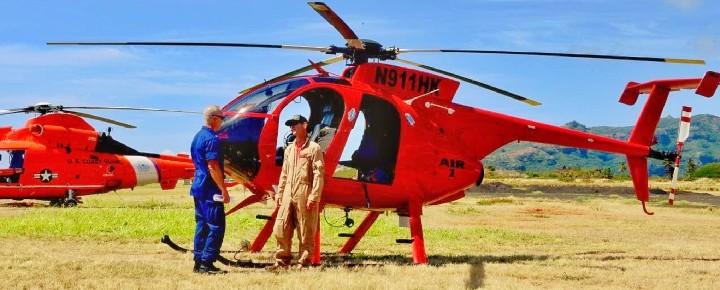

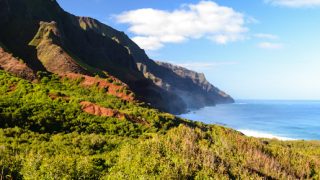
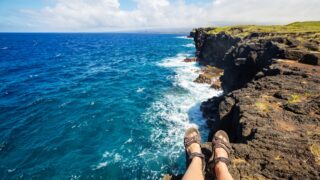

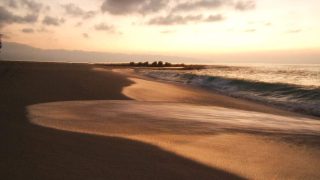
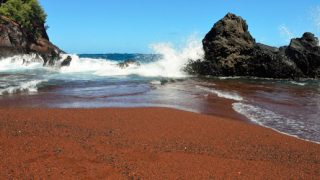
I hiked this trail in 1986 with no plan, no experience, other than youth, and learned my lesson. It was before social media, and it was the word on the beach how nice it was. I got so dehydrated, but everything turned out alright. Now with social media, there is no excuse not to be educated about hiking trails, a/i or not. Hiking is for different levels and tourists are becoming so reliant on anything but education to get their kicks.
I broke my wrist on the Kalalau trail last year after reading a review that said it was a family friendly hike. I did not have to be rescued because some hikers helped me down. While I was in the ER a man came in who had fallen down an embankment and cut his head open. Stay away from that trail!
You are right Laura.
The victim blaming needs to stop. The trail is unsafe. Are Hawaiians ok with tourists deaths?
Watch YouTube videos of terrified hikers clinging to the side of rainy cliffs with no railings or ropes. Angels Landing in Zion has chains to hold. Kalalau is like a goat path with no margin for safety. Kauai weather changes fast, if heavy rain begins you are toast.
Thank you for this reminder to validate the research one does online. We have a trip to Kauai next September, and I would like to do some simple trails and visit beaches safe for swimming. I will look to official guidebooks. Years ago, when I lived on Oahu, we used Sierra Club hiking maps that had the trails rated by level of difficulty. I wonder if such things still exist?
Just last week I asked a concierge at a well known hotel about a trail that I wanted to hike and if he could recommend a guide. He told me the trail was easy and I wouldn’t need a guide because I would run into many other people on the trail. I found a guide anyway and was very glad that I did. The trail was far from easy, hard to follow, and we came across only one other group of hikers. The female hiker was wearing a sundress and sandals. Seriously?!?!? She must have gotten her information from the same concierge. I hope she didn’t get injured.
Absolutely rescued tourists should have their insurance charged. How many times have you seen Air One complete a rescue only to have the tourists “ refuse medical assistance “. This is insulting and rude. Not Pono. The “poor, tired,” unprepared tourist gets a free helicopter ride. Costing the tax payers thousands of dollars each time.
Too bad the state couldn’t rate these trails with some kind of one to five scale. 1 being easy and 5 being expert guide experience recommended. Danger information such as very slippery,rocky,steep, as well as what shoes not permitted. I understand that not everybody reads signs but if something happens don’t say you were not warned.
Too bad people push their limits while hiking as well as experiences with ocean currents. You have to remember that one mistake can and might be your last.
Sorry but I walked up and repeated walked up Diamond Head trail and there was locals running up the trail passing me and everyone else turning the soil into a ground up powder. I asked one person and they do this daily as a form of daily exercise and trying to reach the top and descent quicker each day. This powder is very slippery when coming down and you have to lock your legs and watch your footing. I don’t see visitors trying to run on such a trail but running sure seems to tear the trail up twice as much. So tell me again how visitors are disrespectful to the land and such.
We the tourists are expected to respect both the land and the locals. Sadly many locals have zero respect for the land and one must earn the respect of other people and as it seems that many locals do not want us there and have made it clear in many ways, respecting them can be difficult.
I have had no reason to check out the site where permits are provided for this hike, however I believe it’d be helpful if this site included all the warnings and information one would need to make an educated decision for everybody who has a interest in this adventure.
Double check on YouTube. Then you can see for yourself.
Fran K.
We did some hiking into the Grand Canyon recently. At the top of the trail is a large sign that warns if you go too far, can’t get back up and have to be rescued you have to pay the expense to be rescued. Perhaps the same message should be posted on the Kahalau Trail.
The example that immediately comes to mind for me is the Manoa Falls Trail. A wide cross section of tourism literature both printed and online state that the trail is “easy”. It is not, while short in length and located in metro Honolulu, the trail is very steep, alternating between loose gravel, slippery wooden ties, and it’s usually muddy, with steep dropoffs that people can easily slip down. Being in the Manoa Valley, heavy rain and high humidity is are constants, along w swarms of mosquitos.
I hike that trail system fairly regularly and I constantly see people trying to climb it in a totally unprepared fashion – Street clothes, dress shoes, flip flops, Bare Feet, very small children who end up having to be carried in slippery conditions, people who are obviously not in shape to make the climb. No insect repellant or water. The list goes on. Yet most tourist guides call it an “Easy” or “Moderate” climb. Not so. That’s my example.
Best Regards
Understand about fines for the visitors for rescue but is it possible to fine persons or companies that post inaccurate information? Aren’t they responsible as well?
Aloha BOH- Most every time I head to the Blow Hole hike in West Maui I see tourists Way to close to the blowhole edge…don’t get me started on the women who held a young boy about age 11/12 by his arms with legs inside the edge while idiot mom was filming from the trail above- talk about survival of the fittest! Anyways, I wish flights to Maui would hand out anyone who will take one, a small pamphlet on ocean safety points to consider, sea turtle awareness, legit websites to find information on beach conditions/hikes etc… I am constantly telling tourists to back off the sea turtles when snorkeling at Black Rock (by Sheraton).. I honestly think they have no idea or clue that the sea turtles by law need space to surface etc…Hawaii does a poor job of communicating safety awareness/helpful info to tourists- correction not poor; it is a non-existent effort
If visitors are held responsible they might act responsible. They might check out several different sources, find material online then checkout YouTube. One look at a YouTube video about the Kalalau should be enough.
All good stuff. And it’s really a sign of the times. Not isolated to Hawaii or to travel. Most people don’t (and shouldn’t) blindly trust online sources of advice. Travel, investing, DIY, relationships, the law, food, … you name it.
But there are some sources that most of us feel we can trust that have cost people time, money and safety.
Blindly following their GPS-driven maps has stranded people on logging roads in blizzards. If you loose cell coverage using any of the popular mapping apps, the map disappears. You have GPS (latitude and longitude). But it can’t place you on a road. So you’re lost. If the map itself gets unstable like spinning Immediately stop and make a 180.
Just watch a YouTube video of hikers in trouble on the Kalalau Trail.
The trails conditions with wind and rain look insane.
Videos of hikers on Mt Everest look tame in comparison.
Repair the trail or close it.
Bravo, excellent article and well said!
Can’t believe what reckless and stupid activities some visitors engage in while in Hawaii.
Every year we have people who stop at the end of Edward Road in Princeville (at the small roundabout). They attempt to hike down the cliffs to the rocky shoreline. The result is always the same; serious injury or death. This area is clearly marked as a life-threatening hazard. Same goes for the Kalalau Trail. Only very experienced hikers should navigate this beautiful trail. I never attempted to hike the trail decades ago when I was younger and wouldn’t even think about it at my age today. Unless you have military or first responder grade survival skills, forget about it. Take a NaPali Coast boat excursion, or enjoy one of the spectacular helicopter or single engine fixed wing air tours.
Aloha to all!
It’s a shame, but one ramification of our overcrowded, connected world is information pollution. Makes for a dangerous world. Even well-intentioned sources can get infected with bad data, especially in the new AI age. Best advice I think anyone can offer is to double check things, cross-check and use multiple sources just like in the ‘political world.’ And above all, don’t take things for granted—use your head.
Education is key. Many tourists come unprepared because they trust misleading travel content online. A small fee for rescues could help fund campaigns to promote safety and discourage reliance on bad advice.
Where do we draw the line? A regular hiker who gets injured shouldn’t be treated the same as someone who followed bad advice from an unreliable website. There needs to be a way to assess responsibility before deciding on charges.
We went to the Cook Islands last year. The locals told us there is no rescue service; if you get caught on a trail and something happens, it is you and whoever is with you assisting yourself out of the situation. Amazingly, they rarely have a need for any type of rescue. If you remove the safety net, people eventually stop taking risks as they know they are their only hope. Not saying we should not help people, but maybe people need to think of others before doing things.
Good day~ Spot on! Crowd sourcing advise is the bane of our times. Leave it to experts iso someone who stumbles on something and has no clue but believes the world must know. Consult reliable sources, pay attention to the locals and explore for yourself. Anytime I see any post or influencer that is about to share their big secret, I run away.
I found that the Kalalau FB group where visitors shared there experiences was very helpful and first hand.
Interesting dilemma. Holding tourists accountable for their actions could be a game-changer. Whether it’s taking bad advice, hiking an off-limits area or ignoring weather warnings, there should be consequences.
We already pay taxes to fund emergency services, so charging for rescues feels like double-dipping. However, in cases where someone’s actions are blatantly reckless or illegal, for whatever reason, I think an additional fee makes sense.
Tourists need to understand that Hawaii isn’t a controlled environment. A hidden gem they read about somewhere online might be private property or extremely dangerous. I too support charging for rescues when it’s clear that someone was being irresponsible.
It’s not just the cost—it’s the danger to rescue teams. Every time someone ignores warnings for whatever reason including lame advice, they’re not just putting themselves at risk but also those who come to save them. Financial accountability might make people think twice before acting recklessly.
As a resident, it’s frustrating to see people treating Hawaii like it’s a theme park. Clear signs are posted for a reason. If someone blatantly disregards them and requires a costly rescue, they should absolutely be responsible for the expense.
And as for this AI suggestion stuff it is just stupid and frustrating.
A fee for rescue should be considered if someone ignores a warning sign and needs rescue. Of course there should be some caveats to that, people sometimes get injured on the simplest of trails, or have sudden medical emergencies.
Perhaps some literature should be required in hotel rooms and short term rentals which would speak to the truth, and/or a video to watch on the plane as to how to respect the island youre visiting, provide warnings for difficult trails and alternate recommendations
In Colorado, we deal with similar issues during ski season. Tourists attempt runs they’re not prepared for, and rescue teams have to step in. Charging for rescues in cases of negligence could help offset costs, but it’s a fine line—people shouldn’t hesitate to call for help if they truly need it.
I live in Colorado as well and have to agree, you really don’t want people to hesitate to call for help when it is needed. This issue is not unique to Hawaii, there are so many times when I read certain comments and it feels like some Hawaiians think that somehow the issues they face are unique to them.
Being from CO, when I backpacked the Kalalau trail, if found it to be extremely strenuous and can definitely see where someone could get in trouble fast if they aren’t used to narrow trails with exposure. With the right preparation, it is doable though and can be safe.
Also, I get so tired of some locals commenting that their islands are treated like a theme park or Disney, when they propose charging fees to visit, etc., it is their government treating the islands like a theme park with all of the fees.
I think it’s reasonable to charge for rescues when clear signs or warnings are ignored. Tourists often see Hawaii as a playground and forget the real dangers of the environment. Why should taxpayers cover the cost of someone else’s bad choices?
If it is $10,000 per rescue, why not fix the parts of a trail that are the most trouble ? Seems like an investment with a quantifiable payback.
Simple fix is to have a warning and liability disclaimer at each trailhead. So when they pick you up and need disregarded that sign and your flip flops with no water, then you incur the bill. Problem solved.